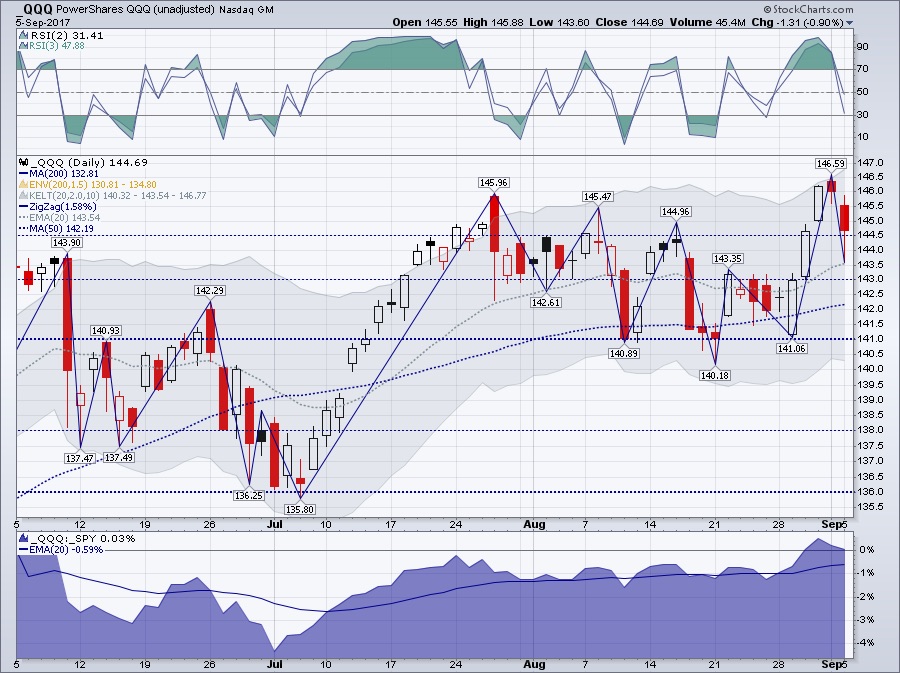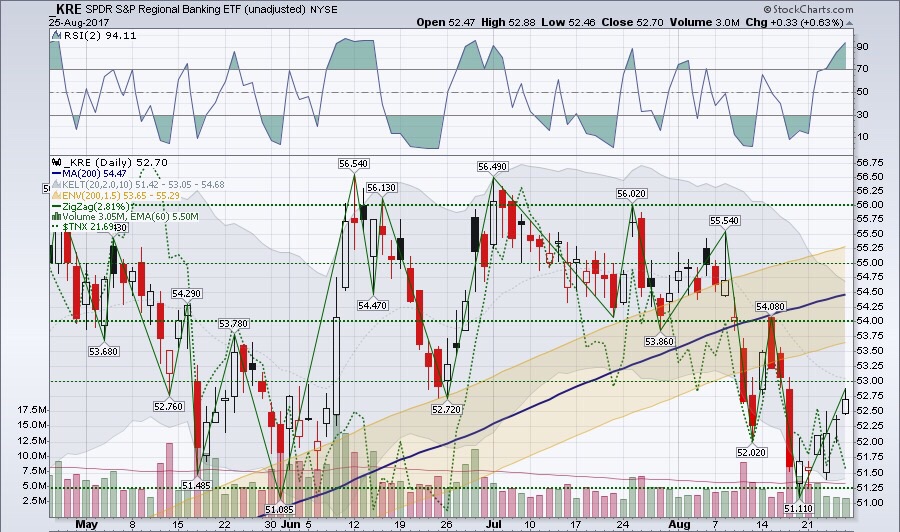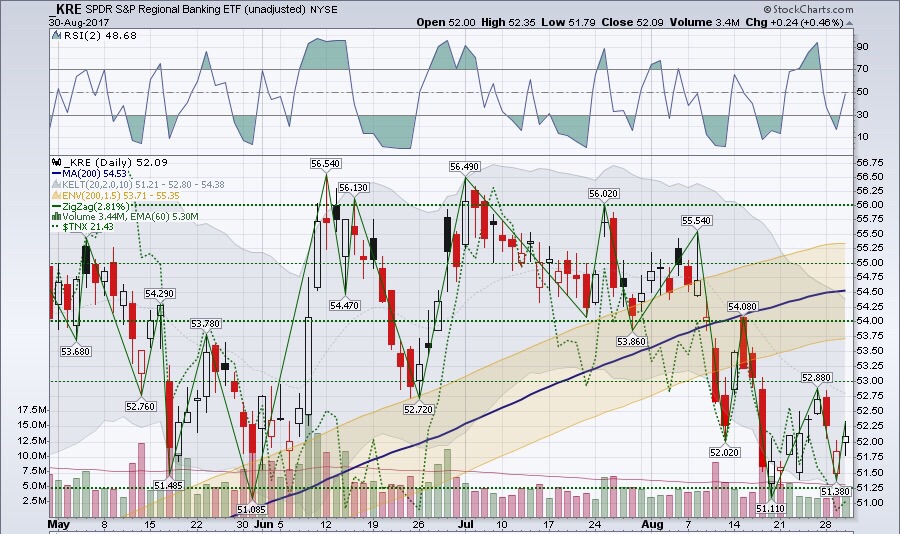Over the summer, Jack Loftis of ETF Swing Trader penned a guest post that summarized his amazing ETF swing trading strategy.
Remember Jack? He’s the dude with a cumulative win rate of ~90% over more than 700 trades publicly shared since August 2011.
Since the response to that article was so positive, I have bugged Mr. Loftis to write a follow-up post with more details about his trading technique.
Specifically, I told him that Morpheus blog followers appreciate real walk-throughs of past trades to show a trading strategy in action.
After four months of me harassing him about it, he finally broke down and did it.
Jack’s back today to review two actual ETF trades he and his subscribers recently profited from.
Continue reading this hot new guest post below to find out how to turbocharge your swing trading success with a surprisingly simple trading system.
Heeeeeere’s Jack…

A “Boring” Trading Strategy (In Theory Anyway)
Last week, after explaining my trading strategy to a new subscriber, I realized I have created and been using the most “boring” trading method imaginable.
I took a well-tested, high probability system, applied it to my trading for 9 years, then developed a computer-generated system based precisely on this finely tuned technique.
In theory, this should make it easy for other traders to follow my exact ETF trading strategy — but many traders have been driven mad when trying to follow my system “by the book.”
Apparently, my winning swing trading strategy may be too boring to precisely follow it without straying the course.
If you’re looking for exciting action, go to a casino.
But if you are seeking a highly effective and consistent trading system, even without much excitement, this ETF swing trading strategy is for you!
Rinse and Repeat
I have spent a lot of time fine-tuning this trading approach for myself over the years.
Now, I am at the point where I confidently know I have a 90% chance of winning every ETF trade I take.
Yeah, yeah, I know.
When I first introduced my service at a trading conference, I saw a slide in someone else’s presentation that day that said, “If someone says they win 90% of their trades, run — don’t walk — to the nearest exit.”
At the time, I began to wonder if I was crazy.
But 700 trades later, I’ve maintained my 90% win rate.
So far in 2017, I’m winning around 97% of my ETF trades (~10 trades per month), and I have not yet lost a single ETF options trade (37 wins in a row this year, averaging +20% profit per trade).
Master trader Linda Bradford-Raschke once said she knew traders that became experts at ONE PATTERN — and were able to make a living at it.
Is that what I’ve become?
Let me show you how I find the same pattern again and again and again; this ETF trade setup resolves in the same way 9 out of 10 times.
Sometimes the profit is small, sometimes it’s large, but this type of trade setup is nearly always exited in the green.
The “Boring” ETF Trading Strategy Revealed
Ready for it? Here’s my recipe for consistent ETF swing trading success:
Find an uptrending ETF, and buy aggressively when it pulls back. Find a downtrending ETF, and buy inverse version aggressively when the ETF bounces. Hold for an average of 5 days.
Although the main points of the strategy may be “boring,” there are still key details and questions that must be addressed with this technique.
For example, how do you define “trending,” so that you can easily scan for it?
How do you define “oversold” and “overbought” in a simple way?
Most importantly, what parameters do you use to reliably make these trades? (Ah, there’s the “secret sauce” you were waiting for).
It was Larry Connors who figured out the right parameters for identifying an ETF swing trade — a trade averaging 5 days from entry to exit.
It’s all detailed in his book, High Probability ETF Trading: 7 Professional Strategies To Improve Your ETF Trading, which my winning trading strategy is also based on.
ETF Chart Setup

Before I show you two actual winning trade examples, I would like to show you the standard setup of my charts.
As shown on the daily chart of $QQQ above, my charts generally have 3 panels.
- The bottom panel shows the relative strength of the ETF versus $SPY (S&P 500 ETF). On the $QQQ chart, you can see this ETF has been outperforming $SPY for months. As such, we have been looking for pullbacks within the uptrend as potential buy entry points.
- ETF price and a few other indicators are in the middle panel.
- The top panel shows a 2-period RSI (2-day period on a daily chart). This helps me find proper buy entry points on a pullback, and is based on when an ETF climbs into “overbought” territory.
$QQQ Swing Trade Setup
The Entry
Using the previous chart of $QQQ (NASDAQ 100 ETF) as an example, notice that $QQQ has been climbing into overbought territory for the past week.
On September 5, the RSI dropped to the 30 level (oversold territory).
This means we have a temporarily “oversold” ETF that is in a general uptrend.
As confirmation, even a casual glance at the chart shows $QQQ was holding support of a trendline I drew at the $144.50 area.
Perfect setup.
One hour before the market closed that day, I emailed subscribers of my service to say I was taking an initial position in $TQQQ (3x leveraged version of $QQQ).
My subscribers and I all took the same trade, at the same time, using “Market on Close” orders.
Although the trade setup was in $QQQ, I bought the leveraged version instead ($TQQQ) because I focus on grabbing small gains on 90% of my trades — I want to get as much “bang for the buck” as possible.
The Exit

The day after buying $TQQQ, it was up about 0.9%.
The leveraged ETF continued higher the following day, then settled into range-bound price action for the next several weeks.
We sold $TQQQ into strength on October 6, locking in a gain of +7.8% on the trade.
I told you this would be boring.
Yet, just imagine if we follow this pattern routine again and again and again — practically every time seeing our accounts increase in size.
$KRE Swing Trade Setup

The Entry
$KRE (Regional Banking ETF) is another recent trade example with a couple of twists.
Unlike the $QQQ trade setup, the $KRE setup is actually a DOWNtrending ETF.
The downtrend has been so strong that $KRE actually broke down below long-term support of its 200-day moving average (the dark blue line with the beige “river” around it).
With such a strong surge down, I was hoping for a bounce into overbought RSI territory to “short” it in some way.
If an inverse ETF for $KRE existed, I would have just bought that ETF.
For example, if this setup would have been in $XLF (Financial Sector ETF), I would have used $FAZ as a trading vehicle (3x leveraged inverse version of $XLF).
But since there wasn’t a good inverse ETF available, I instead bought put options on $KRE (and alerted subscribers) in the last thirty minutes of trading on August 25.
The Exit

As shown on the chart above, $KRE immediately fell sharply lower over the two days that followed my put options entry.
On August 29, just two days after buying the $KRE put options, I sold the options for a 20% gain.
Not bad for a two-day hold.
More importantly, I was happily in cash the next day (August 30) when $KRE started forming a “dead cat bounce” off the lows.
$KRE made the predicted “dead cat bounce” and we locked in put option profits on a simple swing trade.
Conclusion
Looking for the same basic pattern again and again, I admit this strategy is not very exciting
But keep in mind the trade can be a pullback in an Uptrending ETF (long) OR a bounce in a Downtrending ETF (short or inverse ETF).
You can make the trades either with leveraged ETFs or inverse leveraged ETFs.
If you have a smaller account, inverse ETFs can help build your account more aggressively.
Some subscribers with small accounts simply buy call or put options instead of the ETFs — nothing fancy, just buy them and hold until the profit is there.
Don’t get me wrong; these trades do not always magically reverse as soon as I enter.
Yet, I also have a methodical way of handling trades that go against me.
I’ll tell you the details in my next blog post, but just know that it’s once again the same patterns over and over.
Boring or not, this simple ETF trading strategy has been increasing my personal net worth by 18-20% per year — just rinsing and repeating the same pattern.
For small options accounts, imagine a 20% average return on an average option bet of $3,000 — after 37 ETF options trades this year.
Start your trial subscription now to find out if my winning system is right for you.
Also, feel free to personally contact me by email or phone with any questions or comments.
Cheers,
